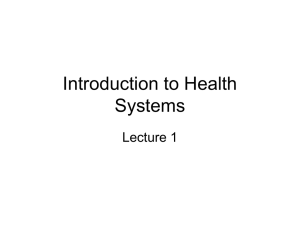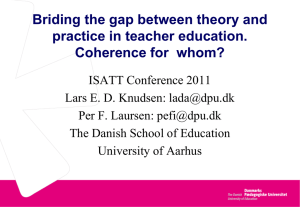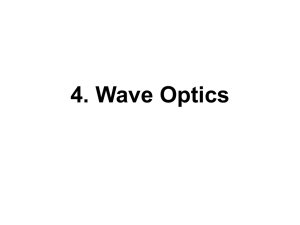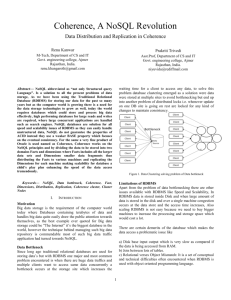Linear Programming
advertisement
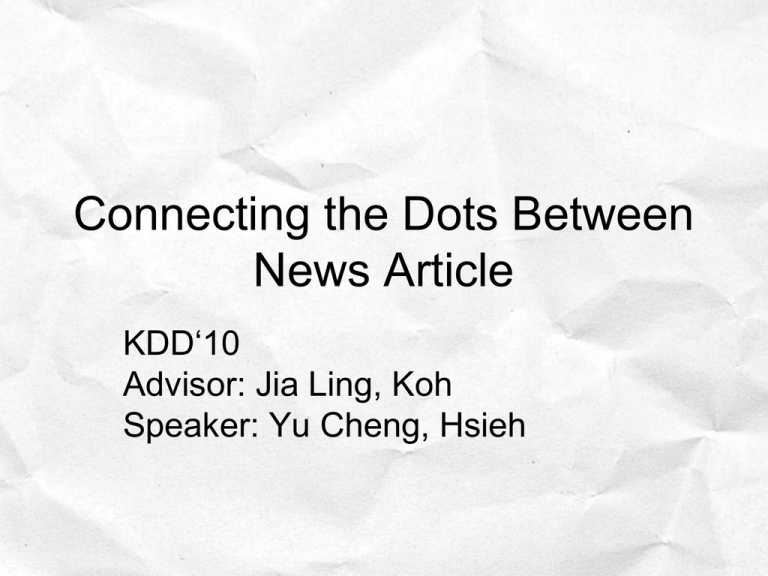
Connecting the Dots Between News Article KDD‘10 Advisor: Jia Ling, Koh Speaker: Yu Cheng, Hsieh Outline • • • • • • • Introduction Scoring a chain Formalize story coherence Measuring influence Finding a good chain Evaluation Interaction Model Introduction • Users are constantly struggling to keep up with the large amounts of content that is being published every day. • With this much data, it is easy to miss the big picture. • Investigate methods for automatically connecting the dots. • Connecting the mortgage crisis to healthcare • This chain should be coherent • The user should gain better understanding of the progression of the story Scoring a chain Formalizing story coherence Formalizing story coherence Formalizing story coherence • Advantage: - Positioning similar documents next to each other - Rewards long stretches of words • Disadvantage: - Overlook importance of a word - Missing Words - Overlook weak links Formalizing story coherence Formalizing story coherence Formalizing story coherence Formalizing story coherence Formalizing story coherence • Jitteriness: topics that appear and disappear throughout the chain - Only consider the longest continuous stretch of each word. - This way, going back-and-forth between two topics provides no utility after the first topic switch Formalizing story coherence Measuring influence Measuring influence Measuring influence Measuring influence Measuring influence Finding a good chain Finding a good chain • Linear Programming - Chain Restriction - Smoothness - Activation Restriction - Minmax Objective Linear Programming Linear Programming Linear Programming Linear Programming • Minmax Objective - Minedge is the minimum of all active edge scores Evaluation • More than half million real news articles were used. • Major news stories of recent years are considered. • For each story, selecting an initial subset of 500 – 10,000 candidate articles, based on keywordsearch • Named entities and noun phrases were extracted from each article(remove infrequent name entities and non-informative noun phrase) Evaluation • Stories linking technique - Connecting-Dots - Shortest-path - Google News Timeline(GNT) - Event threading(TDT) Evaluation • Shortest path constructed a graph by connecting each document with its nearest neighbor based on Cosine similarity • Google news timeline GNT - Using query string to get articles - Construct query string for each story, based on s and t - Picked K equally-spaced documents between the dates of the original query article Evaluation Evaluation • 18 users with a pair of source an target articles • Gauged users familiarity with those articles • Ask whether they believe they knew a coherent story linking them together( on scale 1 - 5 ) • Ask user to indicate - Relevance - Coherence - Non-Redundancy Evaluation Evaluation Interaction Models • Refinement: - Users might be especially interested in a specific part of the chain - A refinement may consist of adding a new article, or replacing an article Interaction Models Interaction Model Evaluation • Refinement - Return two chains, obtained from the original chain by (1) our local search (2) adding an article chosen randomly from a subset of candidate articles - User preferred the local-search chains 72% of the time Evaluation • User Interests - Two chains are showed to users 1 Obtained from the other by increasing the importance of 2-3 words 2 Show them a list of ten words containing the words (1) words whose importance we increased (2) randomly chosen words asked which words they would pick in order to obtain the seconds chain from the first. The goal was to see if users can identify at least some of the words - User identified at least one word 63.3% of the time Conclusion & Future Work • Describe problem of connecting the dots. • Explore different desired properties of a good story, formalized it as a linear program • Provided an efficient algorithm to connect two articles • Allowing more complex tasks



